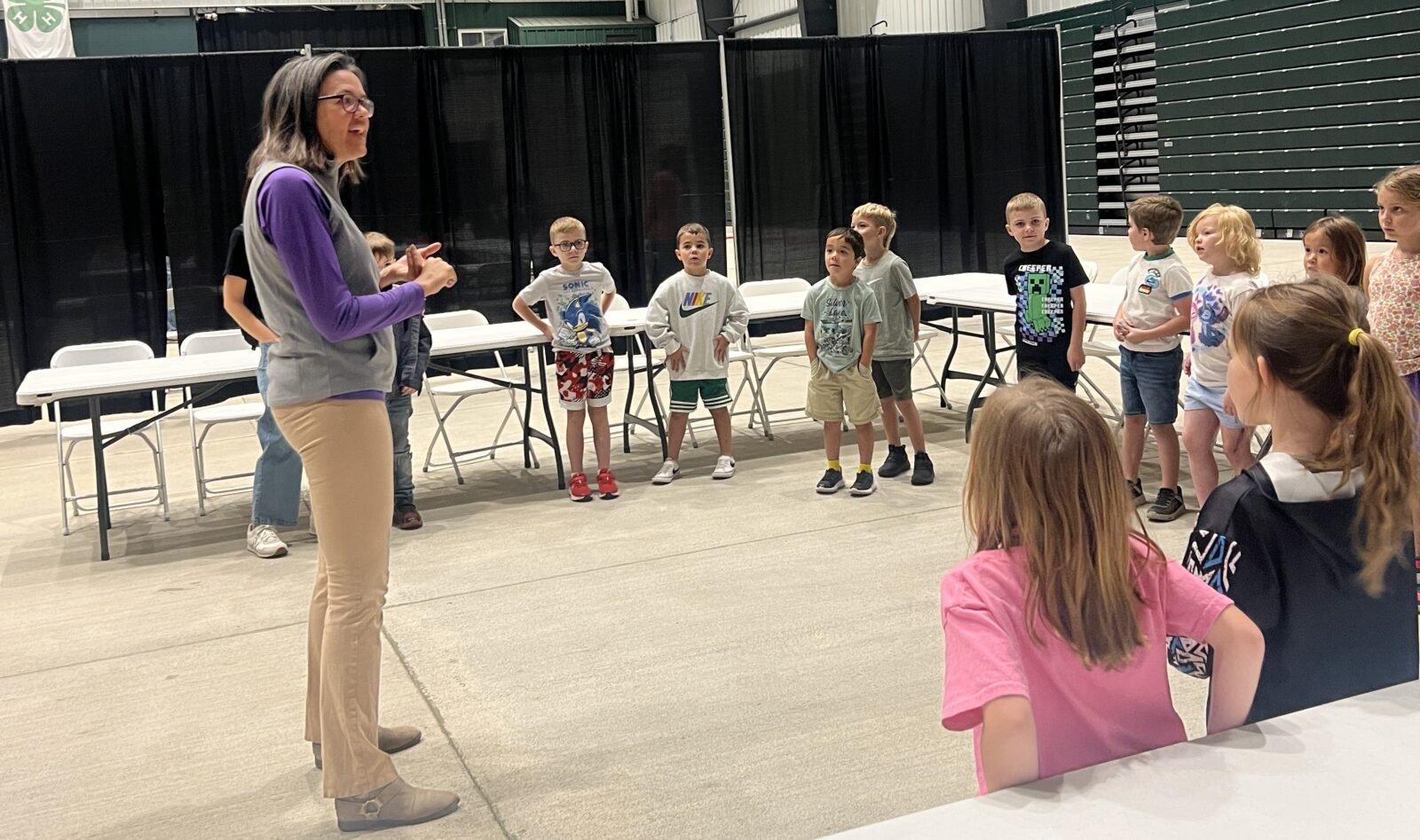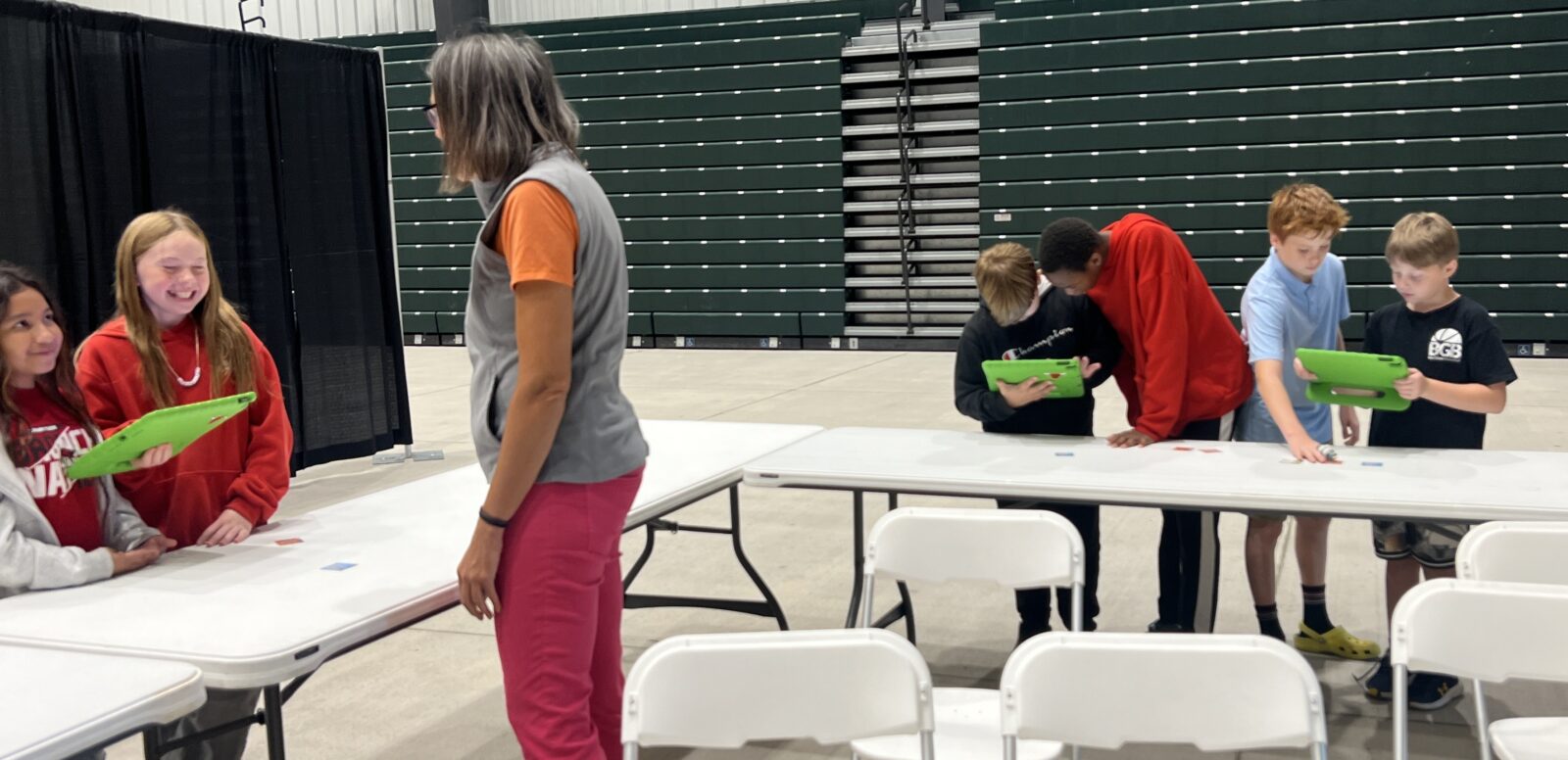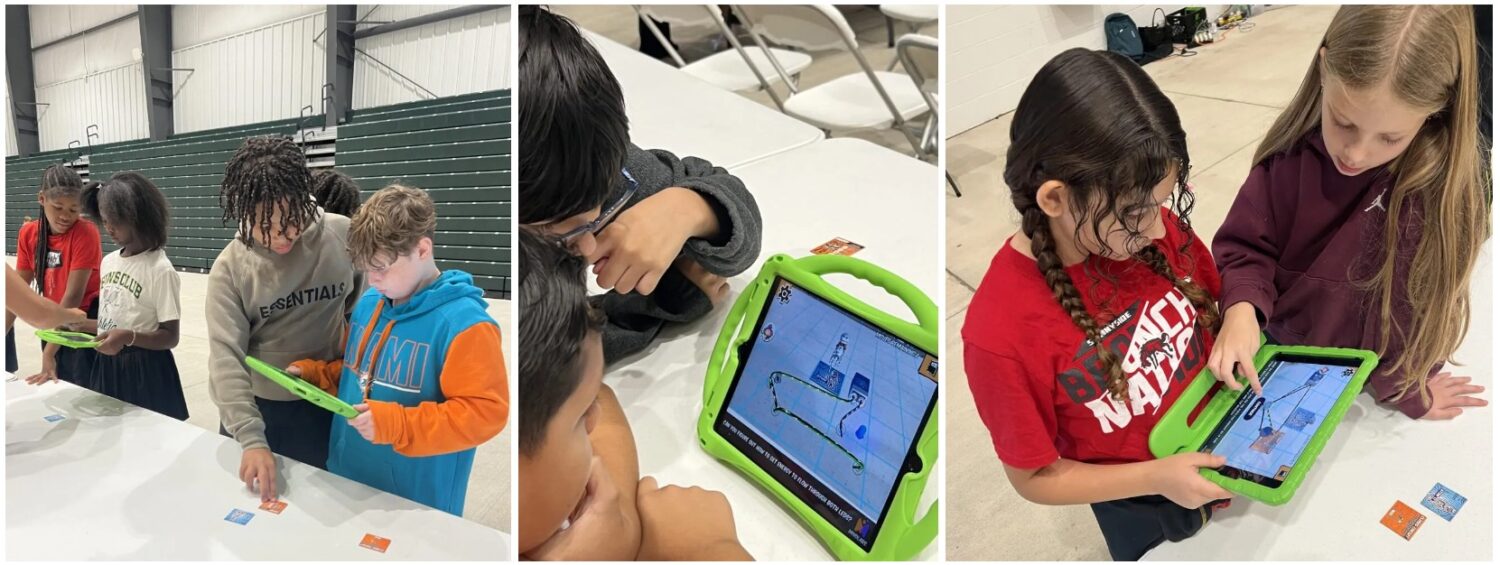This week at the Tippecanoe Fairgrounds, we joined Greater Lafayette Commerce for Manufacturing Week and spent our days with first- through fifth-graders. We opened each session with a simple prompt: “Think about something you use at home, how did it get there?” You could watch the path unfold in their heads: someone designed it, a team produced it, people moved it where it needed to go, and, maybe the most overlooked part, someone supports it so it keeps working.

That last step was our focus. We talked about what support looks like in the real world: noticing what’s wrong, forming a hypothesis, testing a fix, and trying again. Then we asked students to try that process themselves, with a partner. We paired them intentionally to build collaboration and communication, just as essential to their success today and tomorrow as making the circuit work. Two sets of eyes catch more, and saying your idea out loud often reveals the next step.
Using our MindLabs Energy & Circuits module, partners started with simple wins, completing a basic circuit to light a bulb, and then moved through a series of challenges that became steadily more complex. Our platform is scaffolded by design: each exercise builds on the last, so a success in step one becomes the footing for step two. As the challenges progressed, students traced connections, spotted where energy wasn’t flowing, swapped components, and explained why a fix worked, not just that it worked.



The room changed as they climbed. Early on, we heard tentative guesses, “Maybe the wire goes here?”, and a lot of careful checking. By the later challenges, we heard confident plans: “Let’s test this path first; if the fan doesn’t spin, we’ll reverse the wires and try again.” The best part was the back-and-forth between partners: quick sketches in the air, pointing to a diagram on an idea card, little “wait, what if” moments that turned into “there it is!” when the light clicked on or the buzzer finally sounded.
We saw real collaboration, because we invited it, and it mattered more as the difficulty ramped up. When the platform surfaced a tougher challenge, students leaned into each other’s ideas. One partner would suggest a change; the other would run the test. Success traveled across the table: a pair who solved a tricky broken circuit became the go-to team to explain their reasoning to the next pair. The room felt less like a field trip and more like a small engineering lab where curiosity set the pace and evidence made the decisions.
Teachers noticed it too. The instant feedback kept students engaged when a circuit didn’t work on the first try. Instead of shutting down, they bettered their questions: Where is the break? What happens if we move this connector? Did we close the loop? You could see confidence grow in real time. The quiet “oh!” when a bulb finally glowed, the grin when a fan spun up, the shared laugh when a buzzer surprised them, those moments stuck.

Why does this matter beyond a single event? Because early, hands-on wins change how students see themselves. When kids connect the “stuff” in their homes to the chain of design → production → movement → support, they start to see a place for their own talent in that system. They learn that making things work isn’t magic; it’s a method, observe, test, reflect, repeat, that shows up in every modern workplace, especially in manufacturing right here in Greater Lafayette.
We left grateful – for Greater Lafayette Commerce, for the teachers who brought their students and lent their trust, and for a community that believes in giving kids meaningful problems to solve together. We also left encouraged. The next time these students flip a switch at home, they won’t just see a light, they’ll see a system, remember the partner at their elbow, and know they can make it work.
If you’d like MindLabs at your school, camp, or community event, we’d love to talk. Let’s build more of those “oh!” moments, step by scaffolded step.

